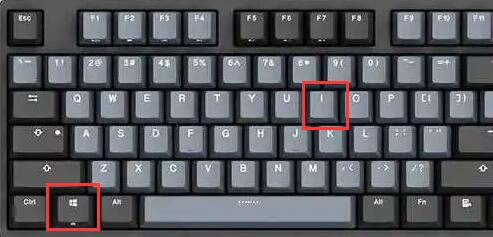 Backend Development
Backend Development PHP Tutorial
PHP Tutorial Monitoring and log management of PHP applications using Docker Compose, Nginx and MariaDB
Monitoring and log management of PHP applications using Docker Compose, Nginx and MariaDB
Use Docker Compose, Nginx and MariaDB to implement monitoring and log management of PHP applications
When developing and operating web applications, monitoring and log management are very important important part. Using Docker Compose, Nginx and MariaDB, we can implement a complete monitoring and log management solution.
First, we need to prepare a PHP application and write it as a Docker image. This PHP application can be a simple static page or a dynamic application containing PHP code. No matter which one it is, we need to package it into a Docker image.
Next, we need to write a Docker Compose file to define the entire environment of our application. In this file, we need to define three services: Nginx, PHP and MariaDB.
version: '3'
services:
web:
image: nginx:latest
ports:
- 80:80
volumes:
- ./nginx.conf:/etc/nginx/conf.d/default.conf
- ./logs:/var/log/nginx
php:
image: your_php_image:latest
volumes:
- ./php:/var/www/html
links:
- db
db:
image: mariadb:latest
environment:
- MYSQL_ROOT_PASSWORD=your_password
volumes:
- ./data:/var/lib/mariadbIn the above configuration, we defined three services: web, php and db. The web service uses the Nginx image and binds port 80 of the host to port 80 in the container. We also specified the mounting path of the Nginx configuration file nginx.conf and the log file directory logs.
The php service uses our own packaged PHP image, and mounts the php directory in the host to the /var/www/html directory in the container, so that our PHP application can access this directory. files in .
The db service uses the MariaDB mirror and sets a ROOT user password. We also mounted a data directory for persistent storage of database data.
Next, we need to prepare an Nginx configuration file nginx.conf for configuring Nginx’s virtual host and log management. Here is a simple example:
server {
listen 80;
server_name localhost;
access_log /var/log/nginx/access.log;
error_log /var/log/nginx/error.log;
location / {
root /var/www/html;
index index.html index.php;
}
location ~ .php$ {
fastcgi_pass php:9000;
fastcgi_index index.php;
fastcgi_param SCRIPT_FILENAME /var/www/html/$fastcgi_script_name;
include fastcgi_params;
}
}The above configuration file defines a virtual host named localhost, which listens on port 80. We configured the access log and error log to the /var/log/nginx directory respectively.
Next, we need to write a script to parse and store the logs. We can write a simple script using PHP to achieve this function. Here is an example:
<?php
function save_log($log_file, $log_data) {
// 解析日志数据
// 存储到数据库中
}
$log_file = '/var/log/nginx/access.log';
$handle = fopen($log_file, "r");
if ($handle) {
while (($line = fgets($handle)) !== false) {
// 解析日志行,获取需要存储的数据
$log_data = parse_log($line);
// 存储日志数据
save_log($log_file, $log_data);
}
fclose($handle);
}
?>In the above script, we use a simple loop to read the log file line by line and store the parsed log data into the database. The specific parsing and storage logic needs to be written according to the actual situation.
Finally, we need to add this script to our PHP application to perform log parsing and storage operations regularly. We can use crontab to implement scheduled execution. Here is an example:
# 每分钟执行一次日志解析脚本 * * * * * php /var/www/html/log_parser.php
Add the above configuration to crontab to execute the log_parser.php script every minute.
To sum up, using Docker Compose, Nginx and MariaDB, we can easily implement monitoring and log management of PHP applications. By configuring Nginx's virtual host and log management, we can store access logs and error logs in specified directories. Then, by writing a script that parses the logs and adding it to the PHP application, we can parse and store this log data on a regular basis. This way, we can easily monitor and troubleshoot the application.
The above is the detailed content of Monitoring and log management of PHP applications using Docker Compose, Nginx and MariaDB. For more information, please follow other related articles on the PHP Chinese website!
 如何在FastAPI中实现请求日志记录和监控Jul 30, 2023 am 08:29 AM
如何在FastAPI中实现请求日志记录和监控Jul 30, 2023 am 08:29 AM如何在FastAPI中实现请求日志记录和监控引言:FastAPI是一个基于Python3.7+的高性能Web框架,它提供了许多强大的功能和特性,包括自动化的请求和响应模型验证、安全性、性能优化等。在实际开发中,我们经常需要在应用程序中记录请求日志以便进行排错和监控分析。本文将介绍如何在FastAPI中实现请求日志记录和监控,并提供相应的代码示例。一、安装依
 win10监控摄像头打开照片的方法Jul 10, 2023 pm 09:41 PM
win10监控摄像头打开照片的方法Jul 10, 2023 pm 09:41 PM如果我们手头没有手机,只有电脑,但我们必须拍照,我们可以使用电脑内置的监控摄像头拍照,那么如何打开win10监控摄像头,事实上,我们只需要下载一个相机应用程序。打开win10监控摄像头的具体方法。win10监控摄像头打开照片的方法:1.首先,盘快捷键Win+i打开设置。2.打开后,进入个人隐私设置。3.然后在相机手机权限下打开访问限制。4.打开后,您只需打开相机应用软件。(如果没有,可以去微软店下载一个)5.打开后,如果计算机内置监控摄像头或组装了外部监控摄像头,则可以拍照。(因为人们没有安装摄
 Linux下的实时日志监控与分析Jul 29, 2023 am 08:06 AM
Linux下的实时日志监控与分析Jul 29, 2023 am 08:06 AMLinux下的实时日志监控与分析在日常的系统管理和故障排查中,日志是一个非常重要的数据来源。通过对系统日志的实时监控和分析,我们可以及时发现异常情况并进行相应的处理。本文将介绍Linux下如何进行实时日志监控和分析,并提供相应的代码示例。一、实时日志监控在Linux下,最常用的日志系统是rsyslog。通过配置rsyslog,我们可以实现将不同应用程序的日志
 Nginx监控实时状态配置,实时查看网站运行Jul 04, 2023 pm 05:18 PM
Nginx监控实时状态配置,实时查看网站运行Jul 04, 2023 pm 05:18 PMNginx监控实时状态配置,实时查看网站运行引言:Nginx是一款非常流行的反向代理服务器,其高性能和高并发能力使得它成为了许多网站的首选。为了保证网站的稳定运行,我们需要时刻监控Nginx的运行状态。本篇文章将介绍如何配置Nginx实时状态监控,并通过示例代码来让读者更好地理解。一、安装Nginx状态监控模块要实现Nginx的实时状态监控,需要在Nginx
 Nginx性能监控与安全分析辅助工具Jun 10, 2023 pm 02:41 PM
Nginx性能监控与安全分析辅助工具Jun 10, 2023 pm 02:41 PM随着互联网的发展,web应用程序的性能监控以及安全分析越来越受到重视。nginx作为一款高性能的Web服务器和反向代理工具,其在性能监控和安全分析方面也受到广泛的关注和应用。本文将介绍一些Nginx性能监控和安全分析的辅助工具。Nginx性能监控工具NginxAmplifyNginxAmplify是Nginx公司推出的一款性能监控工具。该工具可以
 如何使用Golang实现Web应用程序监控Jun 24, 2023 am 09:00 AM
如何使用Golang实现Web应用程序监控Jun 24, 2023 am 09:00 AM在当今的互联网时代,Web应用程序的高效稳定运行是非常重要的。然而,应用程序可能会出现故障或崩溃,影响用户体验。为了确保应用程序的正常运行,我们需要对其进行监控。本文将探讨如何使用Golang实现Web应用程序监控。一、Golang的Web应用程序监控工具Golang拥有非常适合Web应用程序监控的工具。其中最流行的就是Prometheus。Promethe
 如何在Linux上设置高可用的网络存储监控Jul 07, 2023 pm 12:07 PM
如何在Linux上设置高可用的网络存储监控Jul 07, 2023 pm 12:07 PM如何在Linux上设置高可用的网络存储监控在现代的IT环境中,网络存储是一个关键组件,用于存储和管理海量的数据。为了确保数据的可靠性和高可用性,对网络存储的监控和故障恢复是非常重要的。本文将介绍如何在Linux上设置高可用的网络存储监控,并提供代码示例。第一步:安装监控工具在Linux上,我们可以使用一个开源的监控工具来监控网络存储,比如Nagios。首先,
 基于go-zero实现微服务调用链监控Jun 23, 2023 am 09:53 AM
基于go-zero实现微服务调用链监控Jun 23, 2023 am 09:53 AM随着微服务架构的广泛应用,调用链监控已经成为了保障微服务健康运行的重要手段。而基于go-zero框架实现微服务调用链监控,则是更加高效可靠的实现方式。一、调用链监控的基本概念微服务架构中,一个请求可能经过多个微服务组件的调用,这些调用形成了一条调用链。而一旦某一个环节出现问题,整个服务甚至整个系统都有可能受到影响。因此,调用链监控这个技术,就是通过记录整条调


Hot AI Tools

Undresser.AI Undress
AI-powered app for creating realistic nude photos

AI Clothes Remover
Online AI tool for removing clothes from photos.

Undress AI Tool
Undress images for free

Clothoff.io
AI clothes remover

AI Hentai Generator
Generate AI Hentai for free.

Hot Article

Hot Tools

VSCode Windows 64-bit Download
A free and powerful IDE editor launched by Microsoft

SublimeText3 Mac version
God-level code editing software (SublimeText3)

EditPlus Chinese cracked version
Small size, syntax highlighting, does not support code prompt function

MantisBT
Mantis is an easy-to-deploy web-based defect tracking tool designed to aid in product defect tracking. It requires PHP, MySQL and a web server. Check out our demo and hosting services.

mPDF
mPDF is a PHP library that can generate PDF files from UTF-8 encoded HTML. The original author, Ian Back, wrote mPDF to output PDF files "on the fly" from his website and handle different languages. It is slower than original scripts like HTML2FPDF and produces larger files when using Unicode fonts, but supports CSS styles etc. and has a lot of enhancements. Supports almost all languages, including RTL (Arabic and Hebrew) and CJK (Chinese, Japanese and Korean). Supports nested block-level elements (such as P, DIV),





